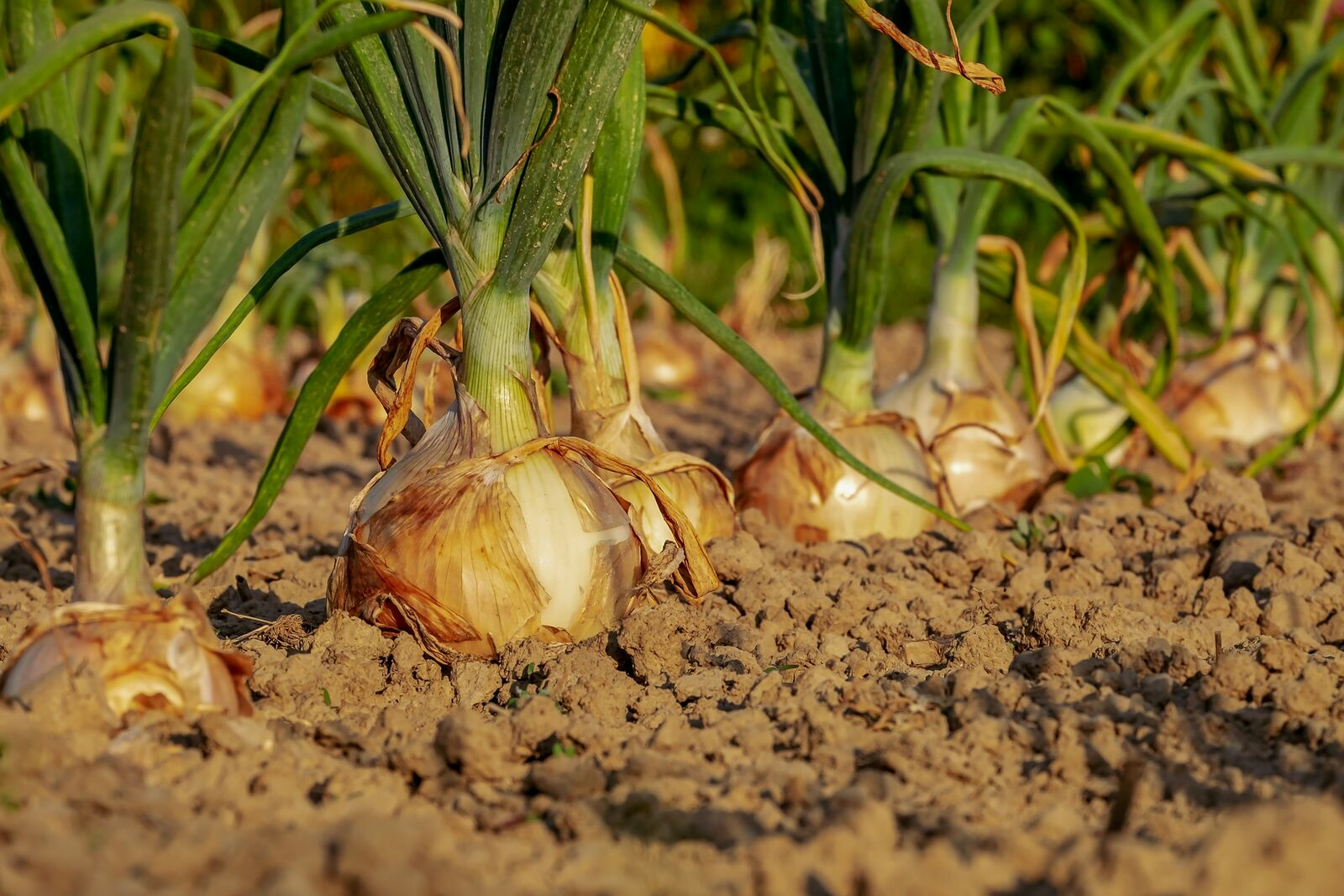
Planting, growing & harvesting onions - a guide
In this article, you will learn everything you need to know about successfully planting onions in your own garden. From choosing the right onion variety to care, harvesting and storage, you will find an overview of what you should bear in mind when growing onions.
This Article Contains:
- Onion types: onions, spring onions and co.
- Growing onions - these varieties are available
- Sowing or planting onions?
- Planting onions - location & soil
- Fertilizing & caring for onions - what you should consider
- Onions: diseases & pests
- Propagating onions
- Harvesting & storing onions
- Frequently asked questions: Planting bulbs
Quick Overview
Onion types & varieties: an overview
- There are yellow, red and white onions, shallots, spring onions and winter onions
- There is a large selection of varieties if you sow onions from seed
- The selection of onion sets is smaller, but you can start harvesting earlier
Growing onions - how it works
- Sow/plant in spring (March/April) or fall (September/October) as seeds or onion sets
- Pre-grow indoors in January/February at a germination temperature of 10 - 15 °C
- Sowing depth: 1 cm - Planting depth: 2 - 5 cm
- Planting distance: 10 - 15 cm, row spacing: 20 - 30 cm
- Weak to medium feeder, medium moisture requirement
- Sunny location with loose, well-drained soil
- Harvest in late summer or fall, for winter onions in spring
Onion types: onions, spring onions and co.
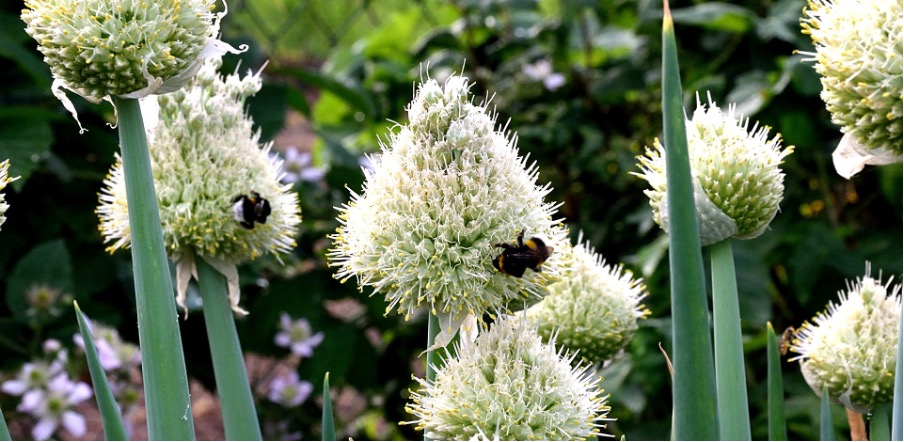
The onion (Allium cepa) belongs to the amaryllis family (Amaryllidaceae) and the genus Allium, which also includes garlic, leeks, chives and shallots. Botanically speaking, the onion is a perennial herbaceous plant, although it is often cultivated as an annual. There are many different types of onion, which differ mainly in taste, size and use. The best-known types are the green onion, the spring onion and the shallot.
Onions can be used in a variety of ways in the kitchen and in the garden. They are easy to care for and uncomplicated to grow. They are rich in vitamins (especially vitamin C), minerals and fiber and are therefore very healthy. Onions also have antimicrobial properties and contain antioxidant plant substances.
Growing onions - these varieties are available
In the world of onions, you will find a wide range of varieties that differ in shape, color, taste and ripening time. In addition to the distinction between species, there is also a division into summer and winter onions, depending on the growing season. Below you will find an overview of onion types and a few examples of onion varieties.
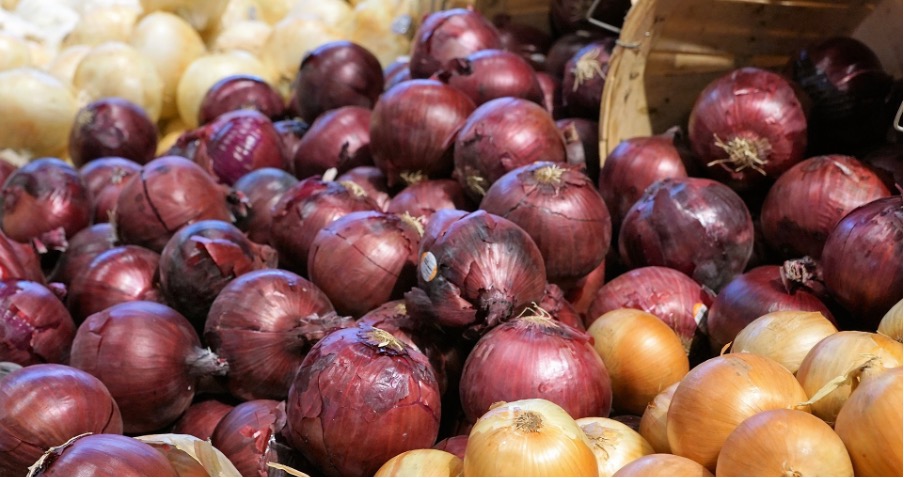
Image by photosforyou from Pixabay.
Old onion varieties
Old onion varieties are particularly tasty and usually more resistant to diseases and pests.
- Cipolla di Tropea: Italian red & sweet variety, for salads and raw consumption
- Borettana: Italian yellow, mild & flat variety, can be used as a pearl onion
- Bedfordshire Champion: English, yellow & spicy onion, good for pickling
- Pear-shaped: Yellow variety from Franconia, elongated onions, quite sweet
Onions
Onions are the most commonly cultivated and used variety and are characterized by their round shape and yellow or white skin.
- Stuttgarter Riesen: A yellow, round onion that stores well
- The Kelsae: From England, very mild & large onions
- Zittauer gelbe: Proven, roundish, firm, durable & robust
- Texas Early: A sweet, yellow onion, large in size, late maturing
Spring onions
Spring onions, also known as spring onions, are very tender and are particularly suitable for salads and garnishing. They are thinner and milder in taste than onions and are often used raw or in salads. They are sown in sets as they can only be stored for a few weeks after harvesting.
- Blanca de Lisboa: Popular, widespread, mild variety with a white stem
- Freddy: Extremely hardy, heavy feeder
- Spring Performer: Heavy feeder, with green foliage and long, white stems
- De Vaugirard: Snow-white, lush, flat-round bulbs, fast-growing
Red onions/purple onions
Red or purple onions are sweeter and milder in taste than conventional onions. They are ideal for salads and raw dishes.
- Rossa di Toscana: Traditional round variety from Italy, stores well
- Di Genova: Early ripening, flat-round, large, very mild and tender, does not store well
- Tropea Rossa Lunga: Oval/elongated, very tender, for fresh use
- Braunschweiger Dunkelblutrote: Well-proven variety with firm, flat-round bulbs, stores well
Shallots
Shallots have a smaller, elongated shape than onions and are prized for their delicate, sweet flavor.
- Longor: elongated, yellow-brown shallot with a delicate flavor
- Biztro: tasty aroma; roundish, red-brown
- Hermine: white skin, roundish, very good aroma, can be stored for a long time
- Eschalote Grise: small, gray, spicy shallot with firm flesh
Winter onion/winter-hardy onion varieties
Winter onions are particularly robust, frost-resistant and can also be grown outdoors in colder temperatures. They are planted in the fall and harvested in the spring.
- Senshyu Yellow: Yellow variety
- Freddy: Extremely hardy, heavy feeder
- Shakespeare: Robust variety
- Tonda Musona: Round, red, sweetish onion
Sowing or planting onions?
Onions can be sown directly as seeds in the bed or planted as pre-grown onion sets in the bed. Onion sets have the advantage over onion seeds that you can start harvesting onions earlier (approx. 4 weeks earlier). You also have less effort. However, the selection of onion sets is significantly smaller than that of onion seeds. Onion sets are also significantly more expensive than onion seeds. Sowing onions often ensures healthier growth and the harvested onions can usually be stored for longer.
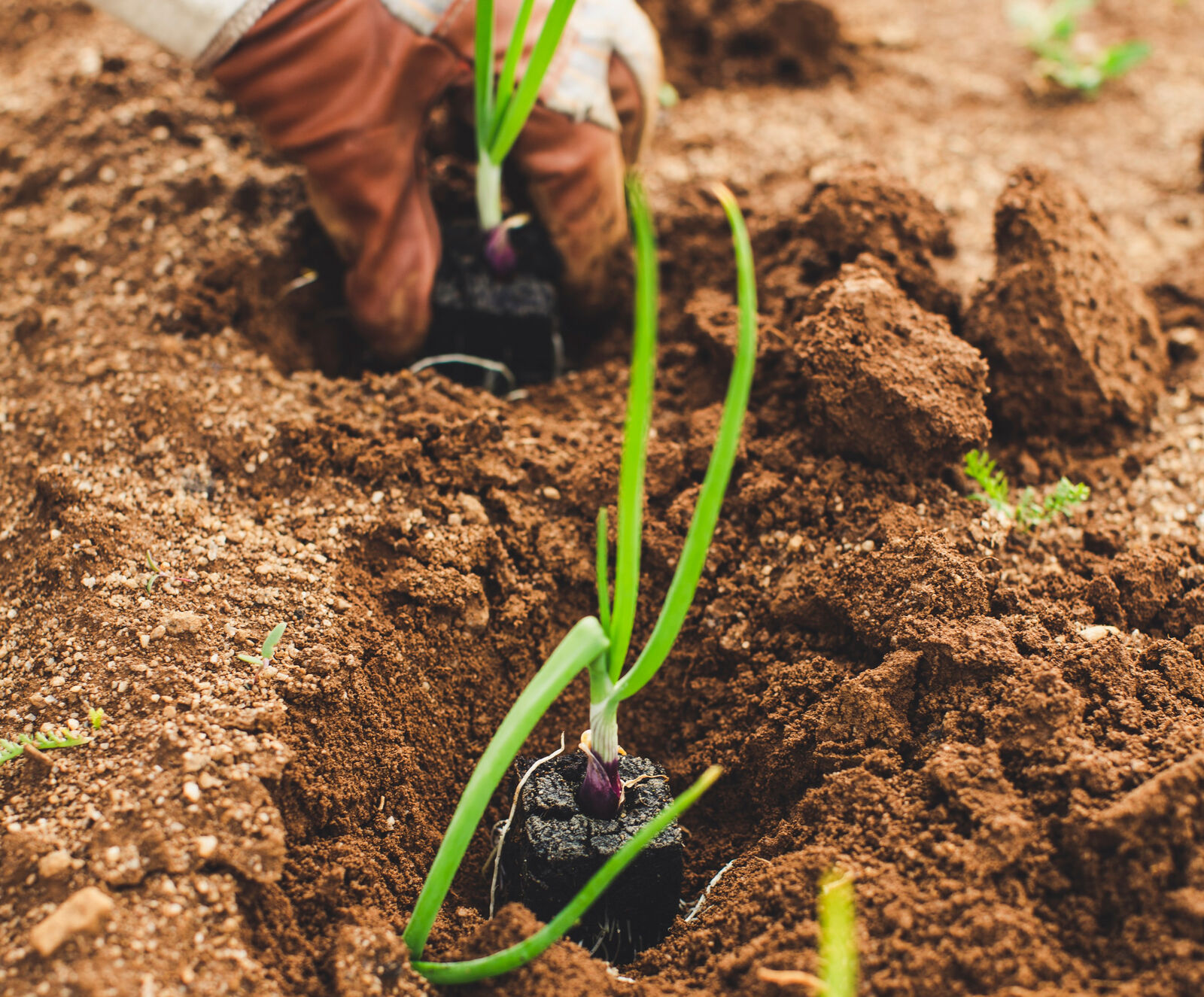
Sowing onion seeds
Summer on ions can be sown outdoors from mid-March to early April. Winter on ions can be sown in the bed from mid-August to September. The sowing depth is approx. 1 - 2 cm and the germination temperature is between 5 - 15 degrees Celsius.
Preplanting onions
To propagate onion cuttings, you can sow them indoors from January in seed trays or pots with moist potting compost. To ensure an even temperature and humidity, cover the seeds until germination. After around 6 - 8 weeks, as soon as the 3rd - 4th leaf is visible and no more heavy frost is expected, the young plants can be planted out in the open. The advantage of pre-grown bulbs is that they are less affected by plant diseases in the bed, weeds or pests.
Planting onion sets
Onion sets are small, pre-grown onions that can be planted directly in the bed. They are usually less complicated to grow and offer the advantage of a quicker harvest. However, the selection of varieties is smaller and onion sets are more expensive than onion seeds. Popular onion sets include the Stuttgarter Riesen, Red Baron, Rote and Birnenförmige varieties.
Planting onions - location & soil
Bulbs prefer a sunny location, preferably open to the wind, where they receive at least 6 hours of direct sunlight a day. The soil should be loose and well-drained to avoid waterlogging. This can lead to rotting. In addition, you should not plant the onions in a place in the bed where onions or other allium plants (e.g. garlic or leeks) have already been planted in the previous 1-2 years. A humus-rich, nutrient-rich soil is ideal for growing onions. Onions are weak to medium feeders and are less dependent on nutrients before planting.
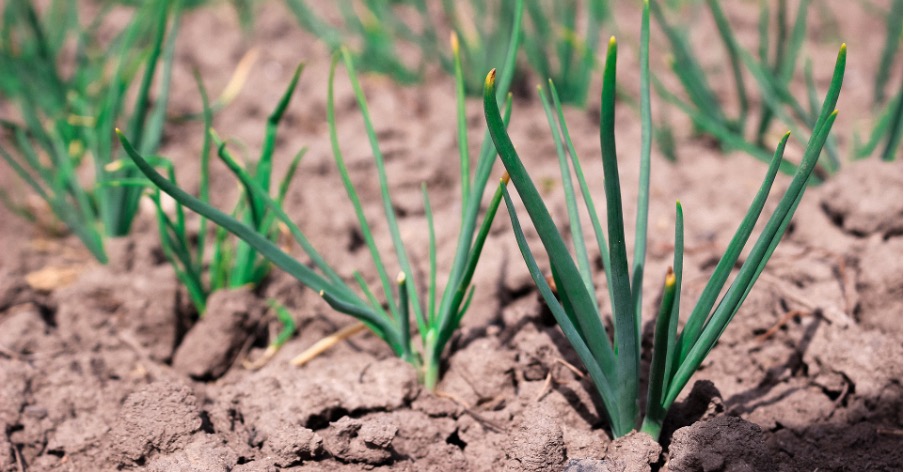
Planting bulbs
Spring onions can be planted in the spring, around February or March, while onions are usually planted in the fall (September to October) or spring (March to April). When planting and selecting onion varieties, you should also bear in mind that not all onions can be stored for a long time. The shelf life depends on the variety and species. When selecting the variety, you should therefore consider whether you want to use your onions directly or store them.
When to plant onions?
The best time to plant onions is in spring (March/April) or fall (September/October), depending on the onion variety. Pay attention to the information on your seed packet or packaging, which will give you information about your specific variety.
How deep to stick onions?
The planting depth for bulbs or onion sets should be around 2 - 5 cm. Make sure that the root side of the bulb is facing downwards and that there is enough room for the tip to grow. Press the bulbs lightly into the loosened soil and then cover them with a thin layer of soil. The tip should still be slightly sticking out of the soil.
Planting distance for onions
The optimum planting distance for edible onions is around 10 - 15 cm within the row and 20 - 30 cm between the rows. Spring onions can be planted closer together with 3 cm between the plants and 15 cm between the rows. This will give your onions enough room to grow and pest transfer is less likely. Water the bulbs carefully after planting to anchor them well in the soil and encourage root growth.
Pro tip: If you soak onion sets in water for a night before planting, they will be heavier and won't be pressed over the soil in the bed. This can happen in damp conditions. They will also grow faster and develop their roots more quickly.
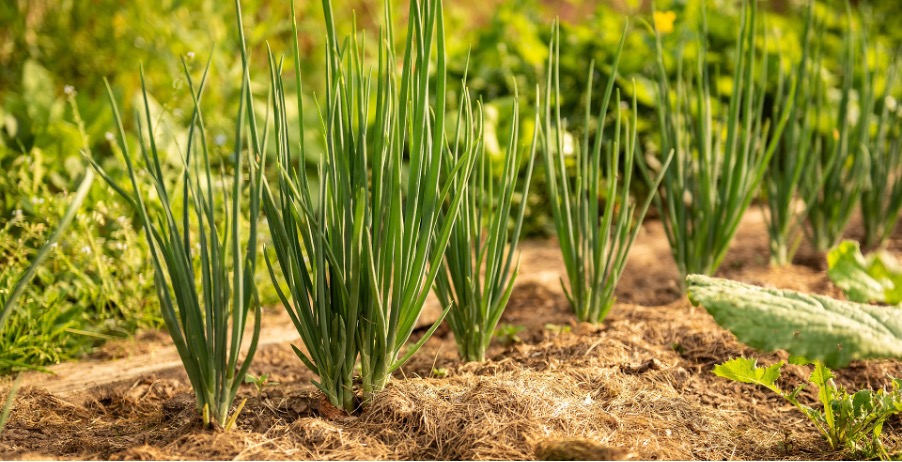
Fertilizing & caring for onions - what you should consider
Onions need a nutrient-rich, well-drained and humus-rich soil. Before planting in the fall, you can mix compost or well-rotted manure into the soil. This is particularly useful for sandy soils. However, you should avoid this while your bulbs are growing, as an excess of nitrogen can lead to increased foliage growth at the expense of bulb formation. Even moisture is ideal. You should avoid waterlogging to prevent rotting. When growing onions, it is also important that you regularly remove weeds from around your onion plants.
Onions: diseases & pests
Onions can be attacked by various diseases and pests. These include powdery mildew, onion fly, onion neck rot and thrips. To reduce infestation, you should observe the succession cropping for onions and maintain the correct planting distance. With good planting partners in a mixed cultivation bed, you can help to ensure that your plants are spared pests and diseases. You can find out more about mixed cultivation with onions in our article Onions: good & bad neighbors. To protect against onion flies, it may be worth covering the plants with crop protection nets.
Propagating onions
Onions are usually propagated using seeds or onion sets. With perennial onion varieties, such as spring onions, you can also use bulbs for propagation. In the second year of cultivation, the onion plant develops a central, upright flower stalk that ends in a spherical, multi-flowered inflorescence. The flowers are usually white, pink or purple and are pollinated by bees and other insects. After fertilization, seed capsules are formed which contain the small, black onion seeds.
Harvesting & storing onions
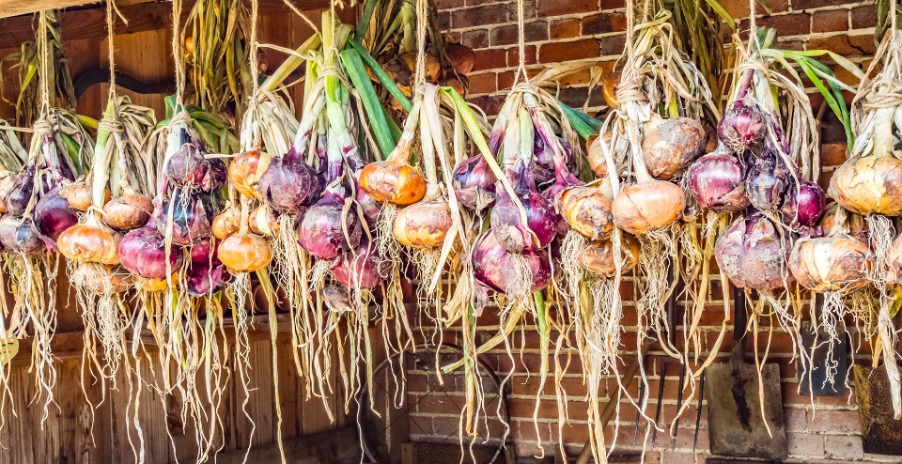
Onions are usually harvested in late summer to autumn, as soon as the foliage has wilted and turned yellow . If you notice that your onions are starting to ripen, you should stop watering them. Carefully pull the bulbs out of the ground and leave them to dry in an airy, shady place for a few days. You can then store the onions in a cool, dark and dry room, such as a cellar or pantry. To prevent mold growth, you should not place the onions in direct contact with the ground and check them regularly. You can find out more about how to harvest onions correctly and how to preserve them in our article Harvesting and storing onions.
If you have any questions or comments, please write to us at magazin@fryd.app. Would you like to receive helpful gardening tips all year round and plan your own beds optimally? Then register here or download the Fryd app for Android or iOS.
Fryd - your digital bed planner
Cover picture by Couleur on Pixabay.
Marielena
Current Topics in the Community

#red , #tuesday

Liked 1 times
#testpostcount

Dec 2025
Popular Articles

Companion Plants for Carrots: What (Not) to Plant With Carrots

Companion Plants for Celery : What (Not) to Plant With Celery?

Strawberry Types: List of Best Strawberry Varieties

Companion Planting With Strawberries: Companion Plants and Planting Plan

Basil Varieties & Types at a Glance

What to Plant With Cabbage: Good and Bad Companion Plants

Fertilizing Strawberries: Home Remedies & Natural Fertilizers at a Glance

Growing Sweet Potatoes: Tips on Cultivation & Companion Plants

Companion Plants for Kitchen Herbs: Chives, Parsley & Co

What Herbs Can Be Planted Together?
FAQ
Until when can you plant onions?
The ideal time for planting onions depends on the onion variety. In general, planting in spring (March/April) or fall (September/October) is best.
How long does it take for an onion to grow and be harvested?
The growing and ripening time varies depending on the onion variety. On average, onions take around 90 - 120 days from planting to harvest.
Yes, bulbs are quite easy to plant. Choose a sunny spot and loosen the soil well. Make sure the soil is well-drained and rich in nutrients. Plant the bulbs about 2 - 3 cm deep in the soil with a row spacing of 10 - 15 cm and 20 - 30 cm between the rows.
How many onions can you harvest from one onion set?
One onion is normally obtained from a bulb onion. Onion sets are small, pre-grown onions that are planted directly in the bed and grow into a complete onion over time.
Before planting, you can mix compost or well-rotted manure into the soil. During the growth phase, you may need to add a little fertilizer from time to time. However, be careful not to add too much nitrogen, as this can lead to increased foliage growth at the expense of bulb formation. As onions are weak to medium feeders, they can manage without additional fertilizer.